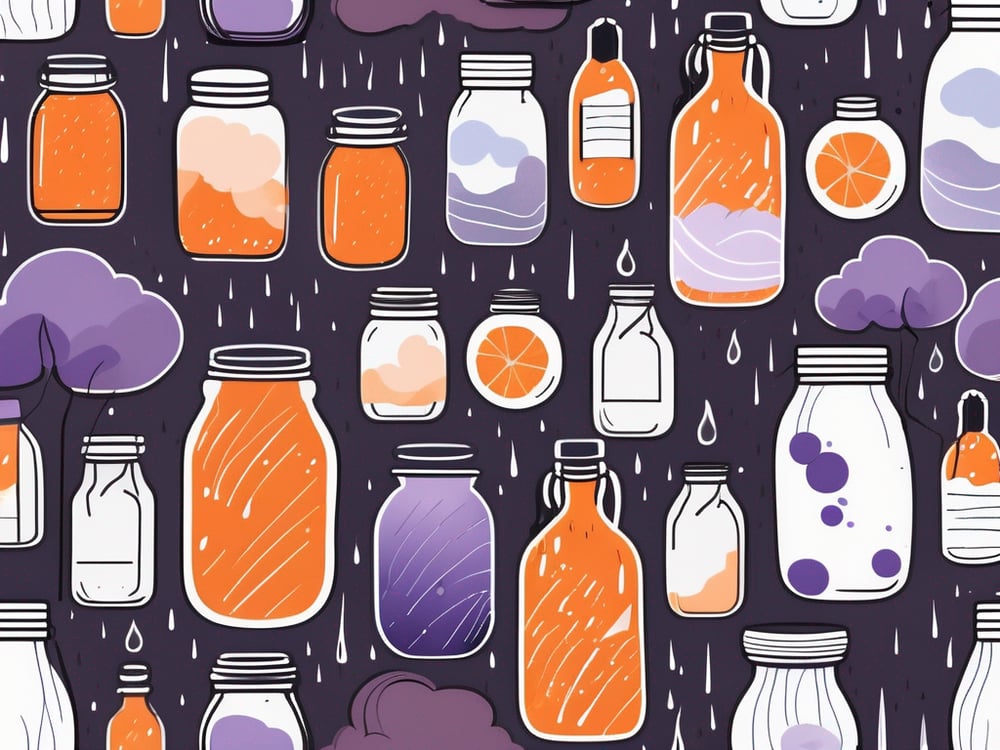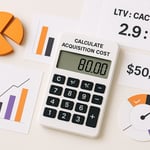Did you know that a single raindrop can ruin a label and make all your hard work go down the drain?
Naturally, businesses do their best to avoid that, and one of the easiest ways to do so is by simply making labels waterproof. But how exactly do you do that? In today’s article, we are going to dive into the following.
- Steps to waterproof your labels
- Materials needed for waterproofing labels
- Different methods of making labels waterproof
- Tips and tricks for effective waterproofing
Table of Contents
ToggleStep-by-Step Guide to Waterproof Your Labels
Before you start the waterproofing process, ensure that your labels are clean and free of any dust or debris. This will ensure a smooth and even application of the waterproofing method.
It is important to note that the cleanliness of the labels plays a crucial role in the effectiveness of the waterproofing process. Any dirt or particles left on the labels can interfere with the adhesion of the waterproofing materials.
To ensure the best outcome, consider using a gentle cleaning solution or a damp cloth to wipe down the labels before proceeding with the waterproofing steps.
Applying the Waterproofing Method
Now, let’s get into the nitty-gritty of waterproofing your labels:
- If you’re using waterproof label sheets, print your labels as per the instructions provided with the sheets.
- If you’re applying a waterproof coating, carefully follow the instructions provided with the coating. Apply the coating evenly to your labels, making sure to cover the entire surface.
- If you’re utilizing laminating techniques, cut out each label individually. Place the label between two adhesive sheets or self-adhesive laminating pouches, ensuring that there is a small border around the label.
- Use a laminating machine or an iron to seal the adhesive sheets together and encase the label within the protective layer. Trim any excess border.
When using laminating techniques to waterproof your labels, precision is key. Take your time to ensure that each label is centered within the adhesive sheets or laminating pouches to avoid any misalignment or air bubbles that could compromise the waterproofing effect.
Additionally, applying even pressure when sealing the adhesive sheets together will help create a tight seal around the label, enhancing its durability and resistance to water damage.
Drying and Testing Your Labels
After applying the waterproofing method, allow your labels to dry completely before handling or using them. Once dry, perform a quick water test by exposing the labels to water for a few minutes. If they remain intact and the print does not smudge, congratulations! You have successfully waterproofed your labels.
It is recommended to let the labels dry in a well-ventilated area to ensure that the waterproofing materials have ample time to set and bond with the labels.
Rushing this drying process may result in a less effective waterproofing outcome, so patience is key. Once the labels have dried, conduct the water test in a controlled environment to accurately assess their waterproofing capabilities.
Materials Needed for Waterproofing Labels

The first step in making your labels waterproof is selecting the appropriate label material. There are several options available, each with its own unique properties and characteristics.
- Vinyl: Vinyl labels are highly durable and resistant to water, oil, and chemicals. They are ideal for industrial use and outdoor applications.
- Polypropylene: Polypropylene labels offer excellent water resistance and are commonly used for product packaging and labeling.
- Polyester: Polyester labels are known for their exceptional durability and resistance to water, UV rays, and harsh environments.
When choosing the right label material for waterproofing, it’s important to consider the specific requirements of your project. Vinyl labels are a popular choice for items that will be exposed to harsh conditions, such as outdoor equipment or chemical containers. Polypropylene labels, on the other hand, are great for products that may come into contact with moisture during transportation or storage.
For a more eco-friendly option, you may also want to explore biodegradable label materials made from materials like sugarcane or recycled paper. These materials offer varying degrees of water resistance while also reducing environmental impact.
Why You Need Waterproof Labels
- Protection: Waterproof labels offer a layer of protection against moisture, preventing smudging and fading. Your labels will stay vibrant and intact, no matter the weather.
- Durability: Waterproof labels are made to withstand harsh conditions, such as rain, sunlight, and even accidental spills. They won’t peel or fade, ensuring that your important information stays legible.
- Versatility: Waterproof labels can be used on various surfaces, including glass, plastic, metal, and even fabric. This versatility makes them suitable for a wide range of applications.
- Longevity: By investing in waterproof labels, you are ensuring the longevity of your labeled items. Whether it’s a product on a store shelf or a container in your refrigerator, waterproof labels help maintain the integrity of the information displayed, avoiding any confusion or misinterpretation over time.
Essential Supplies for Waterproofing
Before you begin waterproofing your labels, make sure you have the following supplies:
- Clear adhesive sheets or self-adhesive laminating pouches
- A laminating machine or an iron
- A pair of scissors or a paper trimmer
- A clean, dry cloth
Additionally, you may want to have a ruler or measuring tape on hand to ensure precise cutting and alignment of your labels. A heat gun can also be useful for applying heat to the labels during the waterproofing process, ensuring a secure and long-lasting seal.
Remember to work in a well-ventilated area when using adhesive materials or heat tools to avoid inhaling fumes. Taking these precautions will help you achieve professional-looking waterproof labels that can withstand various environmental conditions.
Different Methods of Making Labels Waterproof
Using Waterproof Label Sheets
One of the simplest ways to make your labels waterproof is by using pre-made waterproof label sheets. These sheets are designed specifically for printing labels that can withstand moisture. Simply print your labels on these sheets and adhere them to your desired surface. Voila! Your labels are now water-resistant.
Another benefit of using waterproof label sheets is that they often come in a variety of finishes, such as glossy or matte, to suit your aesthetic preferences. Additionally, these sheets are compatible with both inkjet and laser printers, making them versatile for different printing needs.
Applying a Waterproof Coating
If you already have printed labels that aren’t inherently waterproof, you can apply a waterproof coating to protect them. There are various waterproof sprays and sealants available on the market. Follow the instructions provided with the coating and generously apply it to your labels. Allow them to dry completely before use.
When choosing a waterproof coating, opt for one that is specifically designed for the type of material your labels are made of to ensure maximum effectiveness. Some coatings offer UV protection as well, preventing your labels from fading or deteriorating when exposed to sunlight.
Utilizing Laminating Techniques
Laminating your labels is another effective method of waterproofing. You can use either a laminating machine or an iron to encase your labels in a protective plastic layer.
This method not only makes your labels waterproof but also adds durability, making them more resistant to scratches and tears. Laminated labels are ideal for products that will be handled frequently or exposed to harsh environments.
Tips and Tricks for Effective Waterproofing

Here are some common mistakes to avoid when waterproofing your labels:
- Avoid using the wrong label material. Make sure to choose a material specifically designed for waterproofing.
- Do not rush the drying process. Allow your labels ample time to dry completely before handling them.
- Ensure that the coating or lamination is applied evenly to avoid air bubbles or adhesive residue.
Maximizing the Lifespan of Your Waterproof Labels
To extend the lifespan of your waterproof labels, follow these tips:
- Store your labeled items in a cool, dry place to avoid unnecessary exposure to excess moisture.
- Avoid scrubbing or rubbing the labels vigorously, as this may cause them to peel or fade.
- If using labels outdoors, consider using UV-resistant materials to prevent sun damage.
With these tips and tricks, you can confidently create and protect your own waterproof labels. No more worries about smudged text or faded designs. Rain or shine, your labels will withstand the test of time!
Choose Durable Materials for Long-Lasting Waterproof Labels
Keep in mind, when selecting a material for your waterproof labels, it’s important to consider not only its resistance to water but also its durability and longevity.
Opting for a material that can withstand various environmental conditions, such as extreme temperatures or exposure to chemicals, will ensure that your labels remain intact and legible for an extended period.






